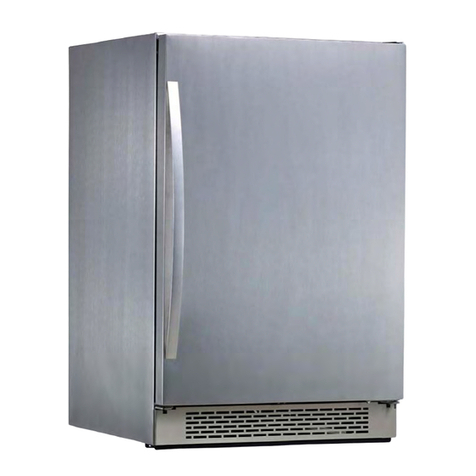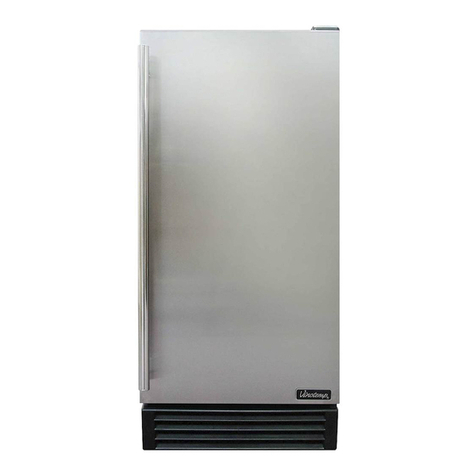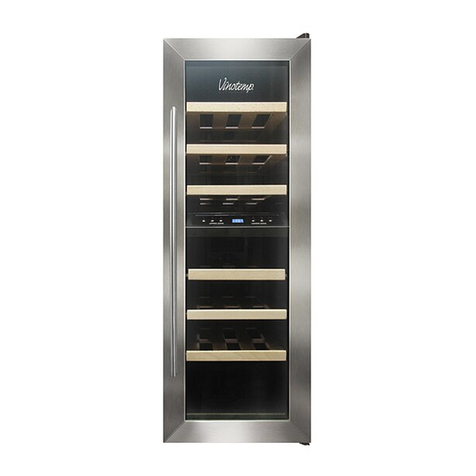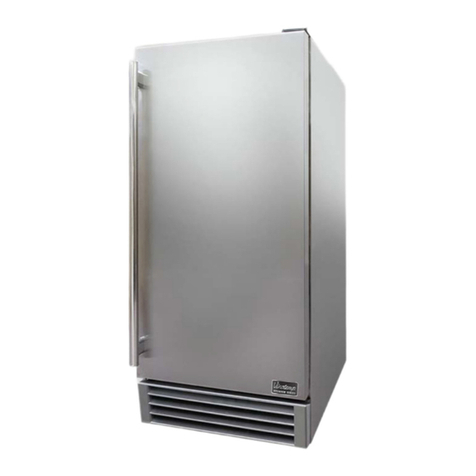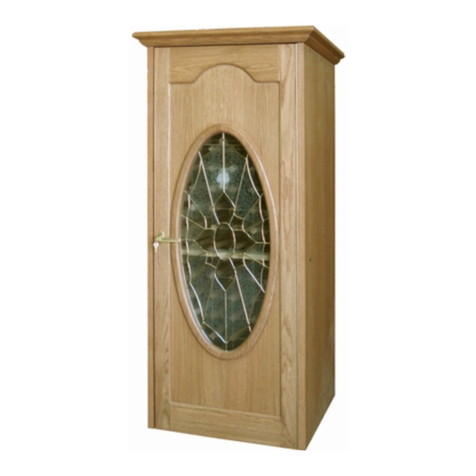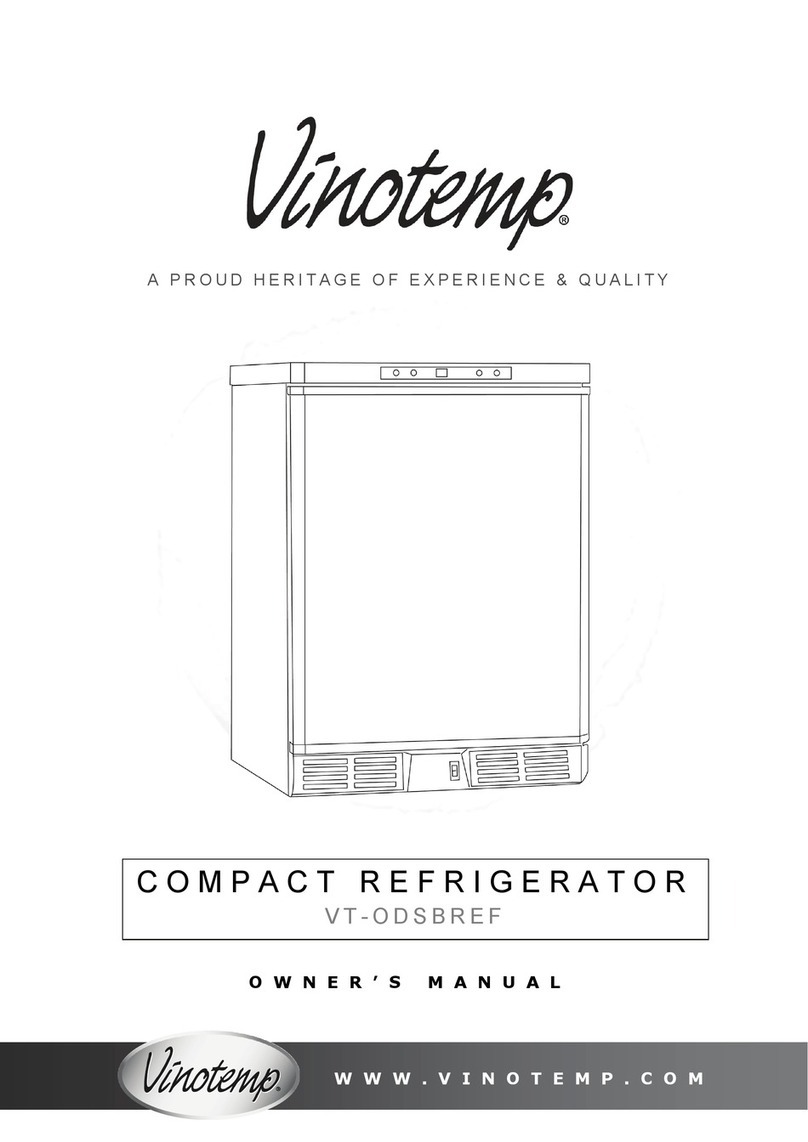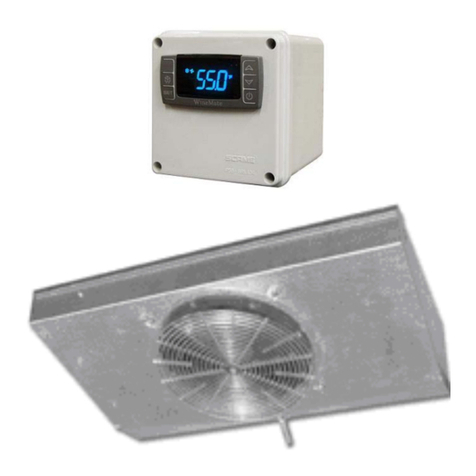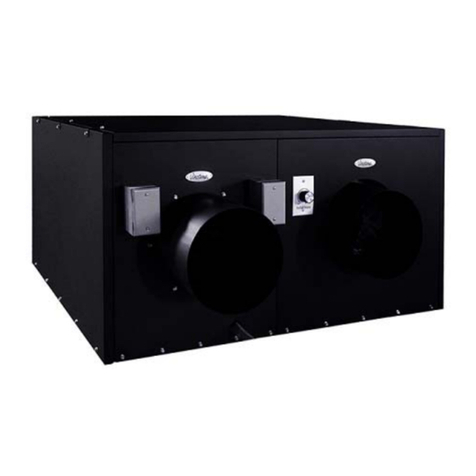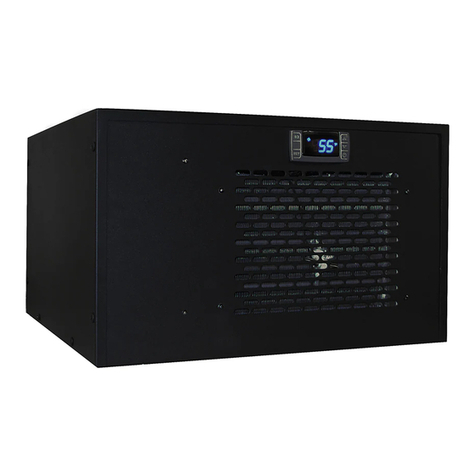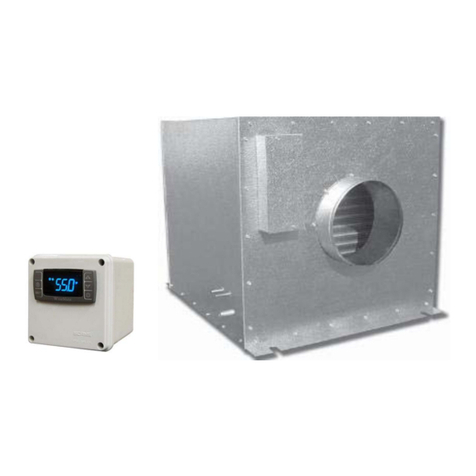
- 7 -
Cellar Construction
This is only a guide and shall be considered as minimum requirements.
All interior walls and floors shall have a vapor barrier and a minimum of R11
insulation. All exterior walls and ceiling shall have a vapor barrier and a minimum
of R19 insulation. The vapor barrier shall be installed on the warm side of the
insulation. All joints, door frames, electrical outlets or switches and any pipes or
vents that go through the enclosure shall be sealed to prevent air and moisture
leakage into the room. Concrete, rock, and brick are not insulation or vapor
barriers.
Doors shall be of a minimum size, insulated to at least R11 and tightly sealed
with high quality weather stripping. Be sure to seal the bottom of the door and fill
gap between the door’s frame and wall before installing the cap molding.
In order to maintain 55 °F in the wine cellar, the ambient temperature
surrounding the enclosure shall not exceed the temperature of the enclosure by
more than 25 °F. No enclosure wall shall receive direct sun or strong wind.
Lighting shall be of low wattage, with a timer to insure lights are not left on when
the enclosure is not occupied.
The cooling system will not be able to maintain the proper temperature if fresh
moisture-laden air is constantly being introduced to the enclosure. Symptoms of
this condition are; unit runs all the time with only a slight reduction in temperature
and/or water overflows from the unit. Because of the temperature difference
between the inside and outside, very small cracks can allow large amounts of
outside air to enter into the enclosure. Please be aware that moisture can pass
through solid concrete, paint and wood. Often a newly constructed room contains
fresh wood, paint, concrete and other building materials. These materials contain
large amounts of moisture. When placed into operation in this type of
environment, the system will work harder to remove this extra moisture resulting
in increased “run” time.
